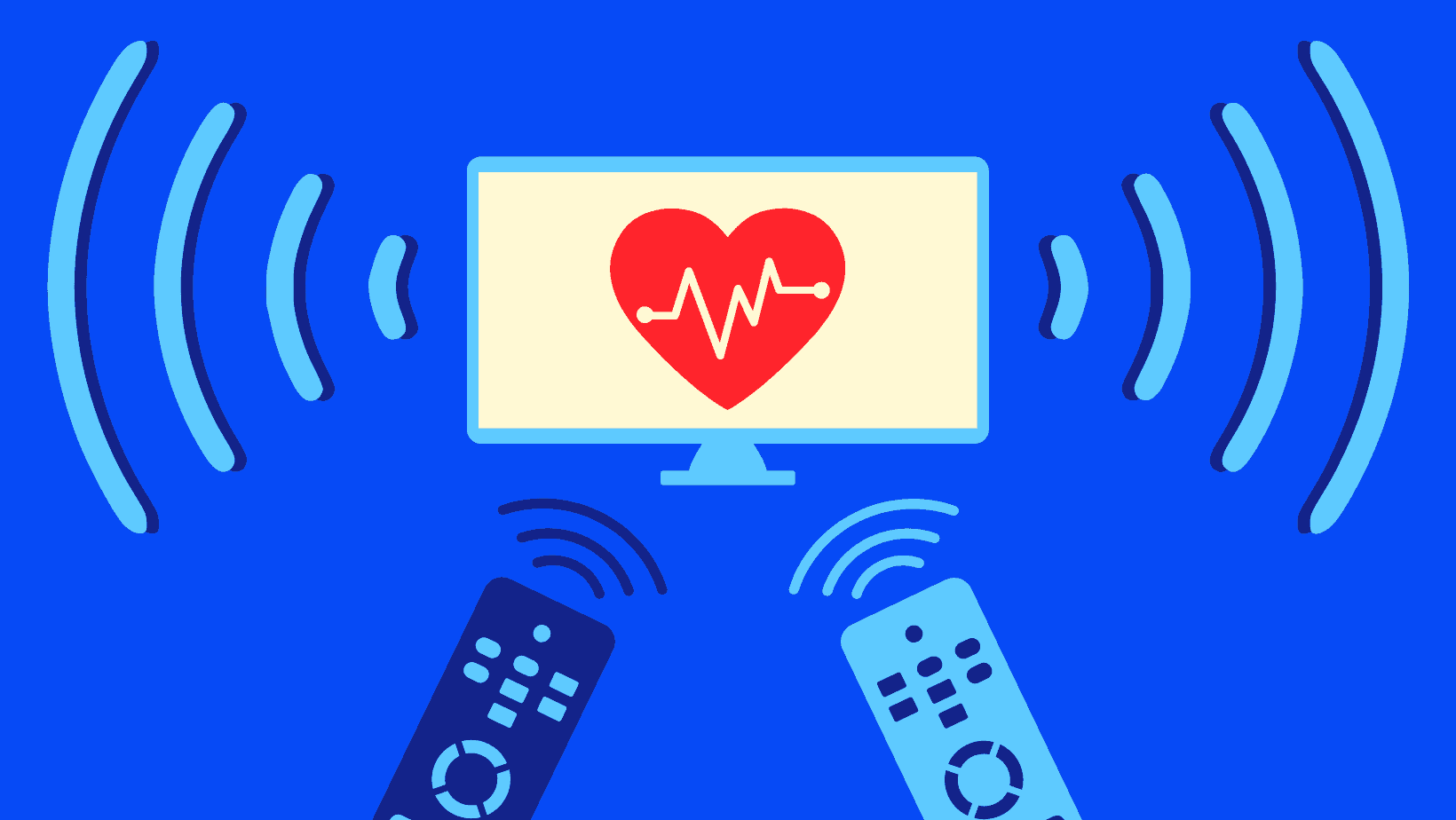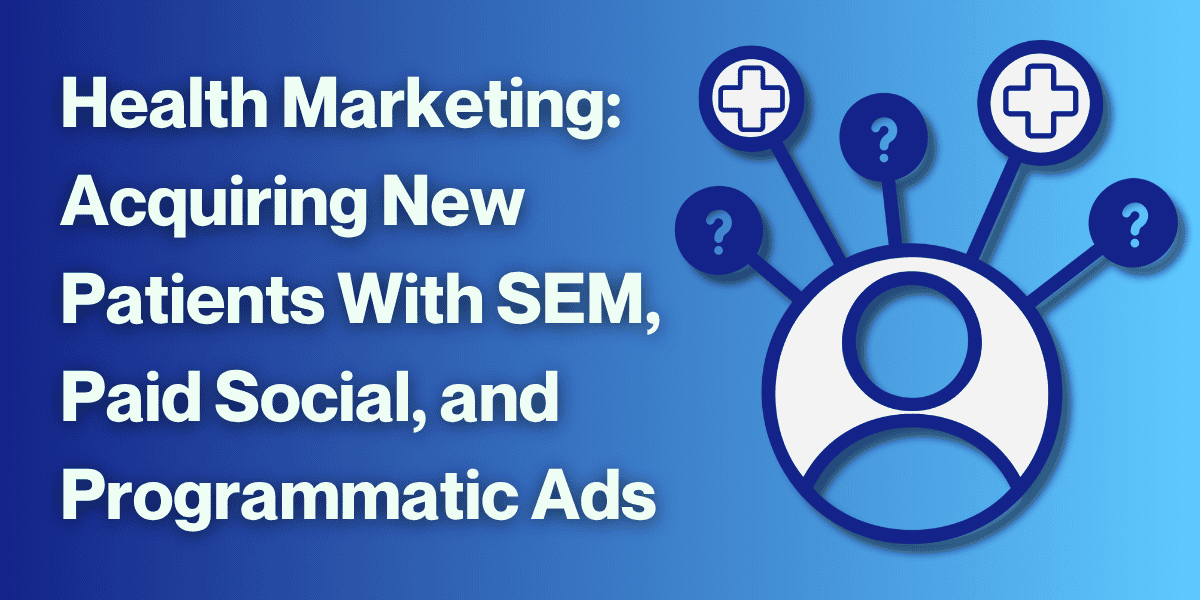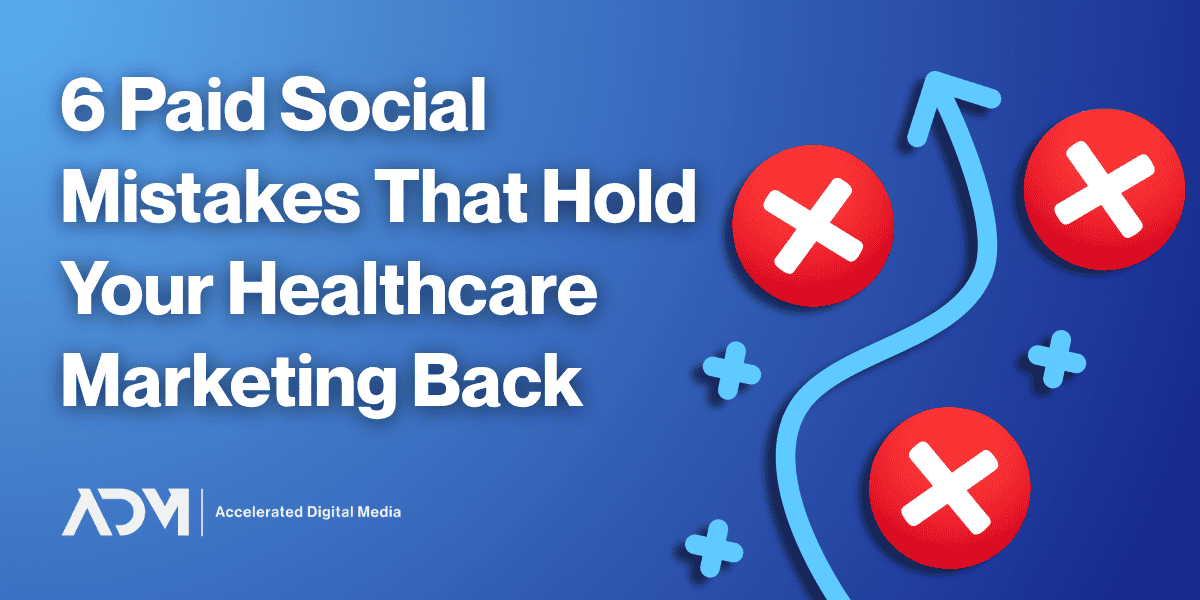The TV ad is a uniquely powerful messaging format: It allows brands to combine visuals, text, and voiceovers to deliver effective pitches in a short block of time. Countless companies in healthcare rely on them to reach patients who may require their services—just watch an evening news broadcast or an episode of Jeopardy! and you’ll be inundated with ads from pharmaceutical and insurance brands.
For digital health companies, the format is equally compelling. But forward-thinking, disruptive healthcare entities require a modern way to take advantage of video ads, one that combines the engaging format of a TV commercial with the granular specificity of digital marketing. That’s why Connected TV ads should be an essential part of any digital health growth strategy.
What is Connected TV Advertising?
Connected TV (CTV) ads are a form of programmatic advertising. The ad time can be purchased through the demand side platforms (DSPs) that brands also use to purchase display ads, podcast ads, and other programmatic formats. They appear on any number of popular streaming platforms, like Hulu, Disney+, and soon maybe even Netflix.
What are the advantages of Connected TV ads?
Nearly 80% of US households are connected to at least one video streaming service, meaning it might actually be more ubiquitous than cable TV at this point. For advertisers, it’s all about finding where potential customers are—and that’s on streaming. Because CTV ads appear before or during the shows and movies that users are streaming, they also carry a great deal of credibility.
CTV is a high-quality creative format that typically has high engagement rates since viewers do not have the ability to skip ads. CTV ads offer further ability to target granular health audiences compared to Social or SEM, and the quality and engagement of CTV ads is typically high due to the nature of the format. Additionally, CTV allows for granular targeting of specific audiences.
How do Connected TV Ads compare to regular TV commercials?
Like a TV commercial, a CTV ad is a brief piece of video advertising content that gives brands a lot of creative freedom. But unlike traditional TV ads, which are placed based on TV channel and time/program, CTV ads are a digital marketing medium—meaning they are targeted and traceable. They can be directed to specific audiences, including compliant healthcare audiences, and tied to sales events or website actions that they have encouraged users to undertake. And because streaming services offer an array of time lengths, there is some variability in the length of the ads that can be run through CTV rather than the strict formats of television advertising.
Why should digital health companies use Connected TV ads?
There are several reasons why digital health companies should consider using CTV ads. CTV ads offer greater targeting capabilities, high-quality engaged audiences, improved conversion tracking that exist in the same ecosystem as other programmatic formats. And because many digital health companies are positioned to bypass or augment the brick-and-mortar healthcare system, there may be significant alignment with their prospective patients and the cord-cutters and younger audiences who primarily rely on streaming for their entertainment.
But the biggest reason digital health brands should consider CTV at the moment is its targeting abilities. Unlike Google Ads and Facebook Ads, which prohibit targeting audiences based on medical conditions, CTV ads can be distributed based on high-quality, HIPAA-compliant first party audiences.
How Do You Target Health Audiences with Connected TV Ads?
As mentioned, Connected TV—and programmatic advertising in general—offer a distinct targeting advantage that other digital marketing formats can’t replicate: Accurate, HIPAA compliant 3rd-party health audiences. This gives you the capability to deploy your ads to accurate in-market medical audiences without violating patient safety or having to navigate platform policies like those found on Meta and Google.
The audiences begin with real-world claims data that is then de-identified, anonymized, and subjected to machine learning that can detect offline behaviors and interests shared by those in-market audiences in order to model lookalikes. These audiences are available through certain demand-side platforms (DSPs) and other third-party connected TV services.
Can You Retarget Audiences with Connected TV Ads?
Targeting with CTV ads can be done in a number of ways. In addition to 3rd party health audiences, retargeting is also on the table. Site visitors can be retargeted with CTV ads,—and these ads also work with other programmatic formats via the DSP. For example, they can also be paired with programmatic display advertising, where viewers of the CTV ad can be retargeted via display ads on the web, providing a direct ability to track clicks on the campaign.
Are Connected TV Ads Expensive to Produce and Run?
No, CTV ads do not have to be prohibitively expensive to produce. In fact, they can often be repurposed from ads already running on other platforms. If your brand is already running a successful YouTube advertising flight, for example, that content may translate just fine to CTV. Even high-quality user-generated video content that succeeds on platforms like Instagram and Facebook can be used to great effect on CTV.
While producing the ads doesn’t have to be costly, running them tends to require more investment than other programmatic formats: cost-per-thousand impressions (CPM) will often run in the $30-40 range for CTV, compared to about $5-10 for display. But because of the credibility, creativity, and potency of video ad formats compared to display, the extra investment is more than worth it.
If you’re still wondering how your digital health brand can leverage Connected TV ads to grow its audience and increase patient acquisition, don’t hesitate to reach out to ADM.




